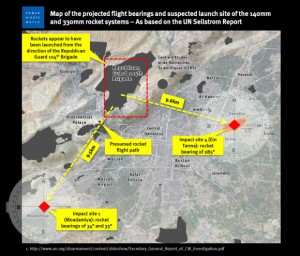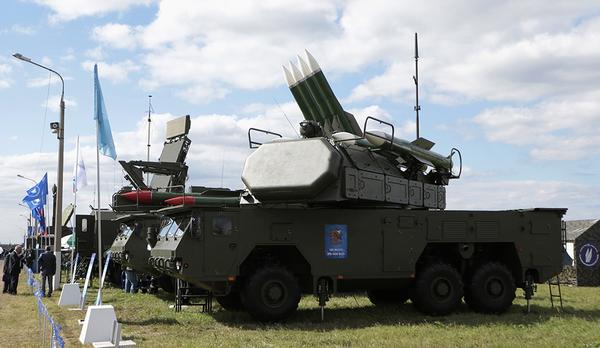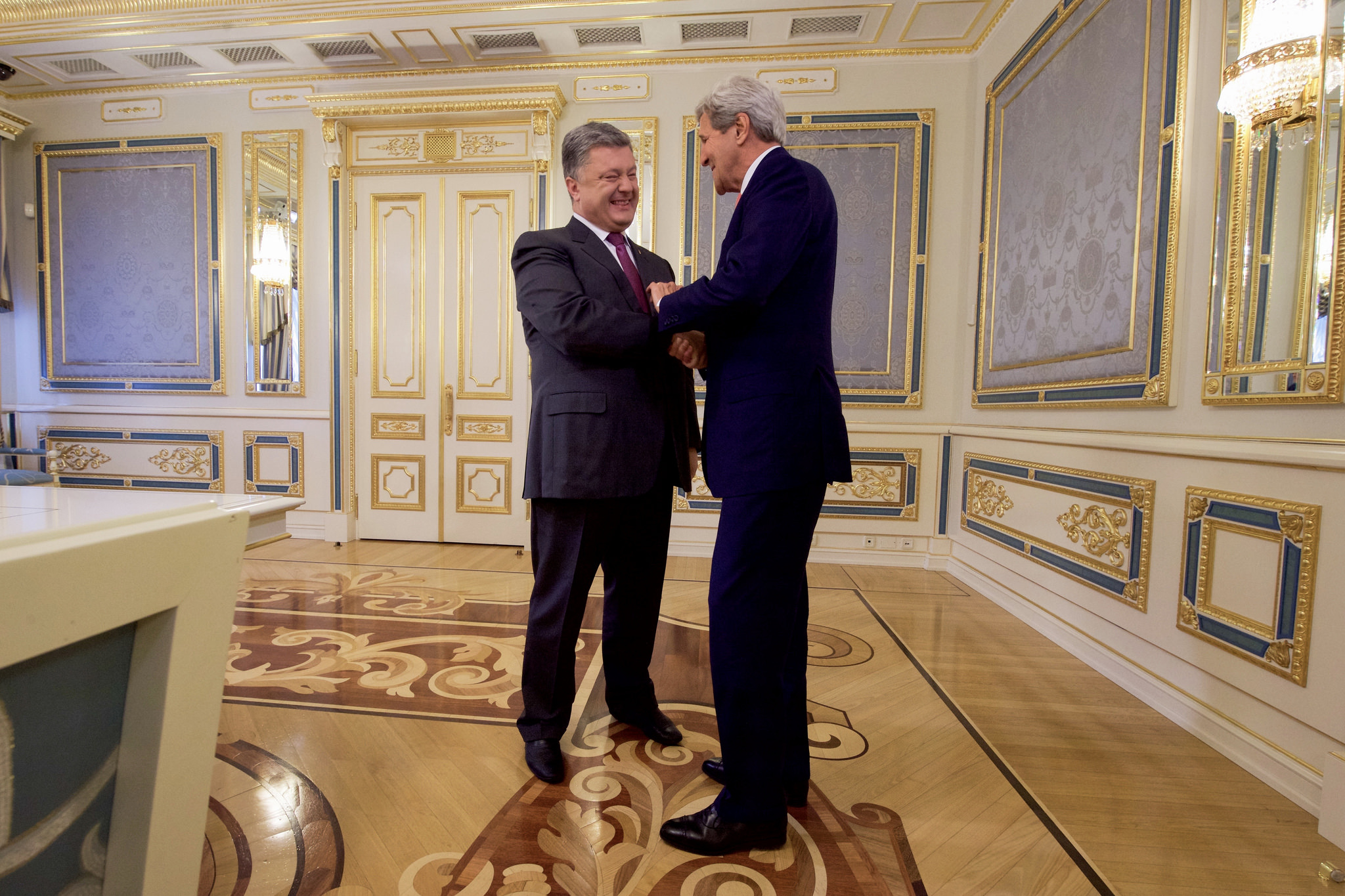Evidence Continues To Emerge MH17 Is A False Flag Operation - Foreign Affairs (4) - Nairaland
Nairaland Forum / Nairaland / General / Politics / Foreign Affairs / Evidence Continues To Emerge MH17 Is A False Flag Operation (11501 Views)
Reports That Eritrean Law Requires Men To Marry Two Wives Are False / Faces Of The Innocent Victims Of Flight MH17 That Killed All 298 People. / Wikileaks: Boko Haram Is A CIA Covert Operation (2) (3) (4)
(1) (2) (3) (4) (Reply) (Go Down)
| Re: Evidence Continues To Emerge MH17 Is A False Flag Operation by NairaMinted: 10:04am On Jul 23, 2016 |
Hard times for NYT... Caught lying about the sarin gas attack in Ghouta, Syria in 2013 and now about MH17. It should be obvious to all by now that the New York Times and the Washington Post do not report News in regards to Amerikan Foreign. Policy . They spin information and ultimately disseminate disinformation. Also, the charlatan and hack Elliot Higgins is further exposed [size=18pt]Will NYT Retract Latest Anti-Russian ‘Fraud’?[/size] July 22, 2016 Exclusive: In covering the new Cold War, The New York Times has lost its journalistic bearings, serving as a crude propaganda outlet publishing outlandish anti-Russian claims that may cross the line into fraud, reports Robert Parry. By Robert Parry In a fresh embarrassment for The New York Times, a photographic forensic expert has debunked a new amateurish, anti-Russian analysis of satellite photos related to the shoot-down of Malaysia Airlines Flight 17 over eastern Ukraine in 2014, labeling the work “a fraud.” Last Saturday, on the eve of the second anniversary of the tragedy that claimed 298 lives, the Times touted the amateur analysis asserting that the Russian government had manipulated two satellite photos that revealed Ukrainian anti-aircraft missiles in eastern Ukraine at the time of the shoot-down.  New York Times building in New York City. (Photo from Wikipedia) The clear implication of the [url=http://www.nytimes.com/2016/07/16/world/europe/malaysia-airlines-flight-17-russia.html?rref=collection%2Ftimestopic%2FMalaysia%20Airlines%20Flight%2017&action=click&contentCollection=timestopics®ion=stream&module=stream_unit&version=latest&contentPlacem]article[/url] by Andrew E. Kramer was that the Russians were covering up their complicity in shooting down the civilian airliner by allegedly doctoring photos to shift the blame to the Ukrainian military. Beyond citing this analysis by armscontrolwonk.com, Kramer noted that the “citizen journalists” at Bellingcat had reached the same conclusion earlier. But Kramer and the Times left out that the earlier Bellingcat analysis was thoroughly torn apart by photo-forensic experts including Dr. Neal Krawetz, founder of the FotoForensics digital image analytical tool that Bellingcat had used. Over the past week, Bellingcat has been aggressively pushing the new analysis by armscontrolwonk.com, with which Bellingcat has close relationships. This past week, Krawetz and other forensic specialists began weighing in on the new analysis and concluding that it suffered the same fundamental errors as the previous analysis, albeit using a different analytical tool. Given Bellingcat’s promotion of this second analysis by a group with links to Bellingcat and its founder Eliot Higgins, Krawetz viewed the two analyses as essentially coming from the same place, Bellingcat. “Jumping to the wrong conclusion one time can be due to ignorance,” Krawetz explained in a blog post. “However, using a different tool on the same data that yields similar results, and still jumping to the same wrong conclusion is intentional misrepresentation and deception. It is fraud.” A Pattern of Error Krawetz and other experts found that innocuous changes to the photos, such as adding a word box and saving the images into different formats, would explain the anomalies that Bellingcat and its pals at armscontrolwonk.com detected. That was the key mistake that Krawetz spotted last year in dissecting Bellingcat’s faulty analysis.  Bellingcat founder Eliot Higgins Krawetz wrote: “Last year, a group called ‘Bellingcat’ came out with a report about flight MH17, which was shot down near the Ukraine/Russia border. In their report, they used FotoForensics to justify their claims. However, as I pointed out in my blog entry , they used it wrong. The big problems in their report: “–Ignoring quality. They evaluated pictures from questionable sources. These were low quality pictures that had undergone scaling, cropping, and annotations. “–Seeing things. Even with the output from the analysis tools, they jumped to conclusions that were not supported by the data. “–Bait and switch. Their report claimed one thing, then tried to justify it with analysis that showed something different. “Bellingcat recently came out with a second report. The image analysis portion of their report heavily relied on a program called ‘Tungstène’. … With the scientific approach, it does not matter who’s tool you use. A conclusion should be repeatable though multiple tools and multiple algorithms. “One of the pictures that they ran though Tungstène was the same cloud picture that they used with ELA [error level analysis]. And unsurprisingly, it generated similar results — results that should be interpreted as low quality and multiple resaves. … These results denote a low quality picture and multiple resaves, and not an intentional alteration as Bellingcat concluded. “Just like last year, Bellingcat claimed that Tungstène highlighted indications of alterations in the same places that they claimed to see alterations in the ELA result. Bellingcat used the same low quality data on different tools and jumped to the same incorrect conclusion.” Although Krawetz posted his dissection of the new analysis on Thursday, he began expressing his concerns shortly after the Times article appeared. That prompted Higgins and the Bellingcat crew to begin a Twitter campaign to discredit Krawetz and me (for also citing problems with the Times article and the analysis). When one of Higgins’s allies mentioned my initial story on the problematic photo analysis, Krawetz noted that my observations supported his position that Bellingcat had mishandled the analysis (although at the time I was unaware of Krawetz’s criticism). Higgins responded to Krawetz, “he [Parry] doesn’t recognize you’re a hack. Probably because he’s a hack too.” Further insulting Krawetz, Higgins mocked his review of the photo analyses by writing: “all he has is ‘because I say so’, all mouth no trousers.” Spoiled by Praise Apparently, Higgins, who operates out of Leicester, England, has grown spoiled by all the praise lavished on him by The New York Times, The Washington Post, The Guardian and other mainstream publications despite the fact that Bellingcat’s record for accuracy is a poor one. [img]http://consortiumnews.com/wp-content/uploads/2016/07/Capture-mh17DSB2-300x183.png.[/img] The Dutch Safety Board’s reconstruction of where it believed the missile exploded near Malaysia Airlines Flight 17 on July 17, 2014. For instance, in his first big splash, Higgins echoed U.S. propaganda in Syria about the Aug. 21, 2013 sarin gas attack — blaming it on President Bashar al-Assad — but was forced to back down from his assessment when aeronautical experts revealed that the sarin-carrying missile had a range of only about two kilometers, much shorter than Higgins had surmised in blaming the attack on Syrian government forces. (Despite that key error, Higgins continued claiming the Syrian government was guilty.) Higgins also gave the Australian “60 Minutes” program a location in eastern Ukraine where a “getaway” Buk missile battery was supposedly videoed en route back to Russia, except that when the news crew got there the landmarks didn’t match up, causing the program to have to rely on sleight-of-hand editing to deceive its viewers. When I noted the discrepancies and posted screenshots from the “60 Minutes” program to demonstrate the falsehoods, “60 Minutes” launched a campaign of insults against me and resorted to more video tricks and outright journalistic fraud in defense of Higgins’s faulty information. This pattern of false claims and even fraud to promote these stories has not stopped the mainstream Western press from showering Higgins and Bellingcat with acclaim. It probably doesn’t hurt that Bellingcat’s “disclosures” always dovetail with the propaganda themes emanating from Western governments. It also turns out that both Higgins and “armscontrolwonk.com” have crossover in personnel, such as Melissa Hanham, a co-author of the MH-17 report who also writes for Bellingcat, as does Aaron Stein, who joined in promoting Higgins’s work at “armscontrolwonk.com.” The two groups also have links to the pro-NATO think tank, Atlantic Council, which has been at the forefront of pushing NATO’s new Cold War with Russia. Higgins is now listed as a “nonresident senior fellow at the Atlantic Council’s Future Europe Initiative” and armscontrolwonk.com describes Stein as a nonresident fellow at the Atlantic Council’s Rafik Hariri Center for the Middle East. Armscontrolwonk.com is run by nuclear proliferation specialists from the Middlebury Institute for International Studies at Monterey, but they appear to have no special expertise in photographic forensics. A Deeper Problem But the problem goes much deeper than a couple of Web sites and bloggers who find it professionally uplifting to reinforce propaganda themes from NATO and other Western interests. The bigger danger is the role played by the mainstream media in creating an echo chamber to amplify the disinformation coming from these amateurs. Just as The New York Times, The Washington Post and other major outlets swallowed the bogus stories about Iraq’s WMD in 2002-2003, they have happily dined on similarly dubious fare about Syria, Ukraine and Russia.  The controversial map developed by Human Rights Watch and embraced by the New York Times, supposedly showing the reverse flight paths of two missiles — from the Aug. 21, 2013 sarin attack — intersecting at a Syrian military base. As it turned out, one missile contained no sarin and the other had a range of only two kilometers, not the nine kilometers that the map assumed. And just as with the Iraq disaster, when those of us who challenged the WMD “group think” were dismissed as “Saddam apologists,” now we’re called “Assad apologists” or “Putin apologists” or simply “hacks” who are “all mouth, no trousers” – whatever that means. For instance, in 2013 regarding Syria, the Times ran a front-page story using a “vector analysis” to trace the sarin attack back to a Syrian military base about nine kilometers away, but the discovery of the sarin missile’s much shorter range forced the Times to recant its story, which had paralleled what Higgins was writing. Then, in its eagerness to convey anti-Russian propaganda regarding Ukraine in 2014, the Times even returned to a reporter from its Iraq-falsehood days. Michael R. Gordon, who co-authored the infamous “aluminum tubes” article in 2002 that pushed the bogus claim that Iraq was reconstituting a nuclear weapons program, accepted some new disinformation from the State Department that cited photos supposedly showing Russian soldiers in Russia and then reappearing in Ukraine. Any serious journalist would have recognized the holes in the story since it wasn’t clear where the photos were taken or whether the blurry images were even the same people, but that didn’t give the Times pause. The article led the front page. However, only two days later, the scoop blew up when it turned out that a key photo supposedly showing a group of soldiers in Russia, who then reappeared in eastern Ukraine, was actually taken in Ukraine, destroying the premise of the entire story. But these embarrassments have not dampened the Times’ enthusiasm for dishing out anti-Russian propaganda whenever possible. Yet, one new twist is that the Times doesn’t just take false claims directly from the U.S. government; it also draws from hip “citizen journalism” Web sites like Bellingcat. In a world where no one believes what governments say the smart new way to disseminate propaganda is through such “outsiders.” So, the Times’ Kramer was surely thrilled to get fed a new story off the Web that claimed the Russians had doctored satellite photographs of Ukrainian Buk anti-aircraft missile batteries in eastern Ukraine just before the MH-17 shoot-down. Instead of questioning the photo-forensic expertise of these nuclear proliferation specialists at armscontrolwonk.com, Kramer simply laid out their findings as further corroboration of Bellingcat’s earlier claims. Kramer also mocked the Russians for trying to cover their tracks with “conspiracy theories.” Ignoring Official Evidence But there was another key piece of evidence that the Times was hiding from its readers: documentary evidence from Western intelligence that the Ukrainian military did have powerful anti-aircraft missile batteries in eastern Ukraine on July 17, 2014, and that the ethnic Russian rebels didn’t.  Makeshift memorial at Amsterdam’s Schiphol Airport for the victims of the Malaysian Airlines flight MH17 which crashed in the Ukraine on July 17, 2014, en route from Amsterdam to Kuala Lumpur, killing all 298 people on board. (Roman Boed, Wikipedia) In a report released last October, the Netherlands’ Military Intelligence and Security Service (MIVD) said that based on “state secret” information, it was known that Ukraine possessed some older but “powerful anti-aircraft systems” and “a number of these systems were located in the eastern part of the country.” MIVD added that the rebels lacked that capacity: “Prior to the crash, the MIVD knew that, in addition to light aircraft artillery, the Separatists also possessed short-range portable air defence systems (man-portable air-defence systems; MANPADS) and that they possibly possessed short-range vehicle-borne air-defence systems. Both types of systems are considered surface-to-air missiles (SAMs). Due to their limited range they do not constitute a danger to civil aviation at cruising altitude.” Since Dutch intelligence is part of the NATO intelligence apparatus, this report means that NATO and presumably U.S. intelligence share the same viewpoint. Thus, the Russians would have little reason to fake their satellite photos showing Ukrainian anti-aircraft missile batteries in eastern Ukraine if the West’s satellite photos were showing the same thing. But there is a reason why the Times and other major mainstream publications have ignored this official Dutch government document – because if it’s correct, then it means that the only people who could have shot down MH-17 belong to the Ukrainian military. That would turn upside-down the desired propaganda narrative blaming the Russians. Yet, that blackout of the Dutch report means that the Times and other Western outlets have abandoned their journalistic responsibilities to present all relevant evidence on an issue of grave importance – bringing to justice the killers of 298 innocent people. Rather than “all the news that’s fit to print,” the Times is stacking the case by leaving out evidence that goes in the “wrong direction.” Of course, there may be some explanation for how both NATO and Russian intelligence could come to the same “mistaken” conclusion that only the Ukrainian military could have shot down MH-17, but the Times and the rest of the Western mainstream media can’t ethically just pretend the evidence doesn’t exist. Unless, of course, your real purpose is to disseminate propaganda, not produce journalism. Then, I suppose the behavior of the Times, other MSM publications and, yes, Bellingcat makes a lot of sense. [For more on this topic, see Consortiumnews.com’s “MH-17: Two Years of Anti-Russian Propaganda” and “NYT Is Lost in Its Ukraine Propaganda.”] Investigative reporter Robert Parry broke many of the Iran-Contra stories for The Associated Press and Newsweek in the 1980s. You can buy his latest book, America’s Stolen Narrative, either in print here or as an e-book (from Amazon and barnesandnoble.com). 1 Like 1 Share |
| Re: Evidence Continues To Emerge MH17 Is A False Flag Operation by NairaMinted: 9:26am On Aug 16, 2016 |
Yet another propaganda "news" outfit exposed for their lies, obfuscation and disinformation about MH17. [size=18pt]MH17 lies exposed - Graham Philips and Billy Six report [Video][/size]  This fresh video from some of our favorite independent journalists shows them... well basically doing their job, which most of German mass media apparently refuse to do. They go over the DirecTV MH17 report, talk to the people mentioned in it, and show that this report (widely praised by mainstream media) is mostly exaggeration or fiction, and the group that produced it is very shady themselves. https://www.youtube.com/watch?v=MhJJYANt0s8 1 Like 1 Share |
| Re: Evidence Continues To Emerge MH17 Is A False Flag Operation by NairaMinted: 10:33pm On Sep 22, 2016 |
Meanwhile the Amerikan led investigation into this incident continues in secrecy and uncertainty over two years after... Lest we forget: “We picked up the imagery of this launch. We know the trajectory. We know where it came from. We know the timing, and it was exactly at the time that this aircraft disappeared from the radar,” said Amerikan State Secretary John Kerry in an interview with David Gregory of NBC's Meet the Press in July 2014 undecided [size=14pt]Almaz Antey hands over radar data on MH17 inquiry, Moscow calls for other countries to follow suit[/size] Published time: 22 Sep, 2016 21:06 Get short URL  The reconstructed cockpit of the Malaysia Airlines Flight MH17 © Michael Kooren / Reuters Russian arms producer Almaz-Antey announced it has handed over radar data on the MH17 crash inquiry. Moscow urged its international partners to share their relevant information as well. Russia corporate group Almaz Antey, which is also a producer of the BUK missile system, announced it had handed over the relevant radar data on the MH17 crash to Russian law enforcement agencies. Read more A crane carries wreckage of the Malaysia Airlines Boeing 777 plane (flight MH17) at the site of the plane crash near the settlement of Grabovo in the Donetsk region November 16, 2014. © Antonio Bronic‘Untenable claims’: Russian activists raise more questions about Bellingcat MH17 investigation In its official statement, the company said the data in question is “the so-called initial radar images of the airspace in raw form.” That includes the registration of movements in the airspace over Eastern Ukraine on the day when the Malaysian Boeing went down in the area. On Thursday, the official representative of the Russian Investigative Committee, Vladimir Markin, announced that Russia will pass this fresh batch of information on the MH17 crash to the Dutch-led international investigators. The spokesperson for the Russian Foreign Ministry, Maria Zahharova, told journalists on Thursday that the move is crucial, since the information is “awaited by the relatives of the crash victims.” "The move by the Russian company should become an important and relevant example for all other countries and anyone who has any information in order to understand what happened two years ago in the skies over Ukraine," Zakharova said. On September 28, the Dutch-led international investigators are set to release their final report on the criminal probe into the crash. The document is expected to shed light on the exact location from where the Boeing was shot down and the side responsible for the incident. In July, the British-based outlet Bellingcat issued a report, which contained allegations that the plane might have been brought down by the rebel forces in Eastern Ukraine. It has also cited information that the exact BUK missile system, allegedly responsible for the downing of the plane, was spotted earlier in Russia and belongs to the Russian army. In September, a group of Russian activists named “Anti-Bellingcat” released two reports countering that view. Anti-Bellingcat, which includes activists, journalists and aviation experts, claimed that the British outlet neglected technical facts in their review and simply tried to match allegations to their theories. The Malaysian Boeing MH17, which was en route from Amsterdam to Kuala Lumpur, crashed over Eastern Ukraine on July 17, 2014, killing all 298 people on board. 1 Like 1 Share |
| Re: Evidence Continues To Emerge MH17 Is A False Flag Operation by NairaMinted: 2:08pm On Sep 30, 2016 |
Two days ago, the JIT released its findings into shoot down of MH17. I must confess that whilst I hoped the Ukro-nazis would be fingered as the culprits at best and that the case would linger in limbo and unresolved at worst, this worrying course of action that Amerika has resorted to convinces me that it has reached the point of no return, it's soul is hopelessly lost and WWIII is inevitable. Anyone with half a brain and that has followed this so called "investigation" can clearly see that there was no investigation. The events over the course of 2 years and 2 months clearly show that Russia had been adjudged guilty right from the very minute that plane was brought down. An "investigation" that was shrouded in top secrecy and in which a NDA was signed between the involved parties; an "investigation" in which data from the very manufacturer of the said missile, Almaz Antey, was disregarded (it's like having a Boeing airplane crash and having no input from Boeing!); an "investigation" in which the only radar data provided from the country that ceaselessly called for an open and fair investigation (Russia) and one which was based on facts, was totally ignored; an "investigation" in which the radars of most likely culprit and the embodiment of a conflict of interest, Ukraine, were conveniently non-functional on that day (over a war zone!); an "investigation" in which fictional and sensational "social media and common sense" submissions that have long been debunked and discredited were provided as "evidence"; an "investigation" that has failed to release the details of what transpired between air traffic control and the aircraft or the that of the flight data recorder and/or voice cockpit recorder; an "investigation" that has been conveniently "concluded" at a time the Hegemon's "moderate" headchoppers are faltering and there is an ever desperate and urgent need to demonize Russia and keep her in check. The people that run Amerika are indeed very dangerous, reckless and utterly desperate. Like both Iraq invasions, the 2013 Ghouta chemical attack, the Libya "humanitarian" intervention, the UN aid convoy attack and the baba of them all, 911, the psychopaths in Washington do not care for facts, rule of law or science. The slow march towards WWIII continues unabated. [size=18pt]Troubling Gaps in the New MH-17 Report[/size] September 28, 2016 Exclusive: The new accusation of Russian complicity in 2014 Malaysia Airlines shootdown was based on Ukrainian intelligence intercepts that were selectively interpreted while contrary information was ignored, writes Robert Parry. By Robert Parry The key conclusion of the Dutch-led criminal inquiry implicating Russia in the 2014 shootdown of Malaysia Airlines Flight 17 relied heavily on cryptic telephone intercepts that were supplied by the Ukrainian intelligence service and were given incriminating meaning not clearly supported by the words. The investigators also seemed to ignore other intercepts that conflicted with their conclusions, including one conversation that appeared to be referring to a Ukrainian convoy, not one commanded by ethnic Russian rebels, that was closing in on the Luhansk airport, placing Ukrainian troops deep inside rebel territory.  A Malaysia Airways' Boeing 777 like the one that crashed in eastern Ukraine on July 17, 2014. (Photo credit: Aero Icarus from Zürich, Switzerland) That conversation was among five that the Joint Investigation Team (JIT) released in seeking the public’s help in identifying persons of interest in the MH-17 shootdown. The callers seemed to be discussing information from Moscow regarding the movement of a convoy, but they describe it as a “Ukrops” or Ukrainian troop convoy. “B: I am saying about the confirmation of the convoy that is going in the direction of the airport… Moscow/Moskva has confirmed… they see it. Is it err… whatsit… Ukrops convoy? “A: The convoy that is going in the direction of the airport? Yes. “B: And how did it go through? “A: Most likely through Sabovka,” which the JIT interprets to be the town of Sabivka, about five miles west of Luhansk and about 92 miles northeast of Donetsk, the two rebel capitals. The Luhansk airport is about 20 miles south of the city center. In other words, if this intercept from JIT is correct, the Ukrainian military was operating near the highway routes that the alleged Russian Buk missile battery would have been using. The conversation then picks up, referring to a possible battle for the airport: “B: So, the convoy was confirmed. Where the convoy can be from? “C: I don’t know where it is going from. It’s from west, isn’t it? “B: It’s somehow going from west. From west. F**king one and a half kilometres from the airdrome. “C: From the airdrome? “B: Yes. “C: It can’t be one and a half kilometres from the airdrome because there is a populated locality there, there are positions there. Probably… I don’t know. Will now try to do something. … I think we will be receiving information soon… our groups have left. “B: Uh-huh. “C: Ok. Well, if they come in the airport, will fight at the airport. What else can we do? “B: Ok. I got you.” Although it’s difficult to know precisely what these callers are discussing, the conversation seems to refer to a potential battle for an airport, not the deployment of a Buk missile system. Also, if Ukrainian forces had penetrated that deep into rebel territory, it is difficult to exclude that a Ukrainian Buk battery might have traveled along the southerly route H-21, which skirts Donetsk and then heads east toward the JIT’s claimed firing site in a field near the town of Pervomaiskyi. H-21 then bends north toward Luhansk airport and the city of Luhansk. The Ukrainian Buks The JIT video report on the MH-17 case, which was released on Wednesday, also didn’t address questions about the location of several Ukrainian Buk missile batteries that Dutch (i.e. NATO) intelligence placed in eastern Ukraine on July 17, 2014, the day that MH-17 was shot down. A finding from the Dutch intelligence service, MIVD, released last October, said the only high-powered anti-aircraft missile systems in eastern Ukraine at that time, capable of bringing down MH-17 at 33,000 feet and killing all 298 people onboard, belonged to the Ukrainian military, not the rebels.  A photograph of a Russian BUK missile system that U.S. Ambassador to Ukraine Geoffrey Pyatt published on Twitter in support of a claim about Russia placing BUK missiles in eastern Ukraine, except that the image appears to be an AP photo taken at an air show near Moscow two years earlier. Although the location of the Ukrainian Buk systems would seem to be crucial to the investigation — at least in eliminating other suspects — JIT operates under an agreement with the Ukrainian government that lets it veto the release of information. Ukraine’s SBU intelligence service, which represented the Kiev government in the JIT, also has among its official responsibilities the protection of secret information that could be damaging to Ukraine. Regarding JIT’s claim that the Buk missile system crossed over from Russian territory, the video report states: “All telecom data and intercepted telephone calls that have been examined by the investigation team demonstrates that the Buk/TELAR (the self-contained operating system) was brought into Ukraine from the Russian Federation.” But as evidence the JIT cites one phone intercept, which – according to the JIT’s translation – does not use the word Buk though referencing a piece of equipment that can move on its own or be transported by truck. That could be a Buk system but could apply to many other weapons systems as well. In the intercepted call, one speaker said, “it crossed, crossed the line.” The narrator of the JIT video report then adds, “The Buk/TELAR crossed the line, in other words, it passed the border.” But there are two assumptions here: that the unidentified weapon is a Buk and that the “line” means border. That could be the case but other interpretations are possible. Another key point, the disputed location of the so-called “getaway” video of a Buk missile system missing one missile, is simply asserted as fact without an explanation as to how the JIT reached its conclusion placing the location near Luhansk. While the Western mainstream media has given the JIT great credibility, the JIT itself has acknowledged a dependency on Ukraine’s SBU, which shaped the inquiry by supplying its selection of phone intercepts. Yet, the SBU is far from a neutral party in the investigation, nor does it have clean hands regarding the Ukrainian civil war that followed a U.S.-backed putsch ousting elected President Viktor Yanukovych on Feb. 22, 2014, and sparking an uprising among ethnic Russian Ukrainians who represented Yanukovych’s political base in the east and south. Since then, the SBU has been on the front lines of crushing the rebellion by using controversial tactics. In late June 2016, the United Nation’s Assistant Secretary-General for Human Rights Ivan Simonovic accused the SBU of frustrating U.N. investigations into its alleged role in torture and other war crimes. Simonovic criticized the SBU for “not always providing access to all places where detainees may be kept. … OHCHR (the Office of the U.N. High Commissioner on Human Rights) also continues to receive accounts about torture and ill-treatment, arbitrary and incommunicado detention by the SBU, especially in the conflict zone. “Torture and threats to members of the families, including sexual threats, are never justifiable, and perpetrators will be held to account sooner or later. … War crimes, crimes against humanity and grave breaches of human rights cannot be the subject of an amnesty.” Yet, the SBU strongly influenced the direction of the JIT, which included Ukraine along with the Netherlands, Belgium, Australia and Malaysia. The JIT agreement gave Ukraine veto power over what would be released – even though Ukrainian military units were among the logical suspects in the MH-17 case, Relying on Ukrainian Intelligence Earlier this year, an internal report describing the JIT operation revealed how dependent the investigators had become on information provided by the SBU. According to the report, the SBU helped shape the MH-17 investigation by supplying a selection of phone intercepts and other material that would presumably not include sensitive secrets that would implicate the SBU’s political overseers in Ukraine. But the JIT seemed oblivious to this conflict of interest, saying:  Ukrainian President Petro Poroshenko shakes hands with U.S. Secretary of State John Kerry as he arrives for a meeting in Kiev, Ukraine, on July 7, 2016. (State Department Photo) “Since the first week of September 2014, investigating officers from The Netherlands and Australia have worked here [in Kiev]. They work in close cooperation here with the Security and Investigation Service of the Ukraine (SBU). Immediately after the crash, the SBU provided access to large numbers of tapped telephone conversations and other data. … “At first rather formal, cooperation with the SBU became more and more flexible. ‘In particular because of the data analysis, we were able to prove our added value’, says [Dutch police official Gert] Van Doorn. ‘Since then, we notice in all kinds of ways that they deal with us in an open way. They share their questions with us and think along as much as they can.’” The internal JIT report continued: “With the tapped telephone conversations from SBU, there are millions of printed lines with metadata, for example, about the cell tower used, the duration of the call and the corresponding telephone numbers. The investigating officers sort out this data and connect it to validate the reliability of the material. … “By now, the investigators are certain about the reliability of the material. ‘After intensive investigation, the material seems to be very sound’, says Van Doorn, ‘that also contributed to the mutual trust.’” Another concern about how the SBU could manipulate the JIT investigation is that the long assignments of investigators in Kiev over a period of more than two years could create compromising situations. Kiev has a reputation as a European hotbed for prostitution and sex tourism, and there’s the possibility of other human relationships developing between Australian and Dutch investigators and Ukrainian intelligence officers. According to the JIT report, four investigating officers from Australia are stationed in Kiev on three-month rotations while Dutch police rotate in two teams of about five people each for a period of a “fortnight,” or two weeks. The relative isolation of the Australian investigators further adds to their dependence on their Ukrainian hosts. According to the report, “The Australian investigators find themselves a 26 hour flight away from their home country and have to deal with a large time difference. ‘For us Australians, it is more difficult to get into contact with our home base, which is why our operation is quite isolated in Kiev’, says [Andrew] Donoghoe,” a senior investigating officer from the Australian Federal Police. The SBU’s assistance, however, did not lead to a rapid resolution of the MH-17 mystery, now more than two years old. The Dutch Safety Board report last October placed the spot of the suspected missile launch within a 320-square-kilometer area, including both government and rebel positions. According to the Dutch intelligence service finding also released last October, the only anti-aircraft missiles in eastern Ukraine on July 17, 2014, capable of hitting a plane flying at 33,000 feet belonged to the Ukrainian military. There’s also the dog-not-barking mystery of the curious silence from the U.S. intelligence community. Although Secretary of State John Kerry claimed to know the firing location immediately after the shootdown, the U.S. government went silent after CIA analysts had time to evaluate U.S. satellite, electronic and other intelligence data. A source who was briefed by U.S. intelligence analysts told me that they saw the attack as a rogue Ukrainian operation involving a hard-line oligarch with the possible motive of shooting down Russian President Vladimir Putin’s official plane returning from South America that day, with similar markings as MH-17. But I have been unable to determine if that assessment represented a dissident or consensus view inside the U.S. intelligence community. For its part, the Russian government has denied supplying the eastern Ukrainian rebels with a Buk system although the rebels did possess shorter-range, shoulder-fired MANPADs. Investigative reporter Robert Parry broke many of the Iran-Contra stories for The Associated Press and Newsweek in the 1980s. You can buy his latest book, America’s Stolen Narrative, either in print here or as an e-book (from Amazon and barnesandnoble.com). 1 Like 1 Share |
| Re: Evidence Continues To Emerge MH17 Is A False Flag Operation by NairaMinted: 11:08pm On Mar 19, 2018 |
1 Like 1 Share |
Duterte To Jail Those Who Refuse COVID-19 Vaccines / Israel Plans Nuclear Strike On Iran / Bank Of England Lifts Interest Rate To 15-Year High
(Go Up)
| Sections: politics (1) business autos (1) jobs (1) career education (1) romance computers phones travel sports fashion health religion celebs tv-movies music-radio literature webmasters programming techmarket Links: (1) (2) (3) (4) (5) (6) (7) (8) (9) (10) Nairaland - Copyright © 2005 - 2024 Oluwaseun Osewa. All rights reserved. See How To Advertise. 103 |